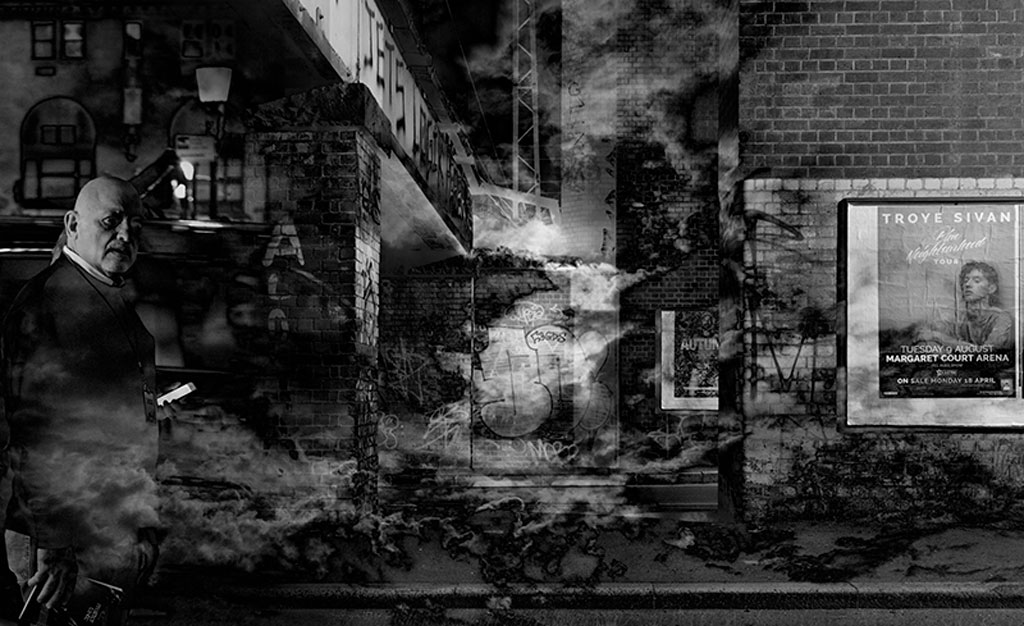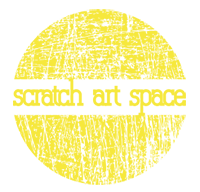
Opens Wednesday 3 May 2017
Runs Thu 4– Sun 14 May
Christopher Sheils is an associate exhibitor with Head On 2017
Opening Event Invitation
Artist Statement
The images in this collection reflect on the dislocation between reality and our perception.
In Discourse on the Method in 1637 Rene Descartes first used the phrase Cogito ergo Sum, “I think therefore I am” recognising that all perception is open to immeasurable error. With inability to ascertain the scale of that error he concluded that the only certainty of existence is oneself, with an element of doubt surrounding all other interpretations external to our own thoughts.
At birth our vision is so poor that we can barely make out vague shapes. By seven months a baby is only just able to perceive depth through movement and shading. By twelve months it can recognise and remember objects. Depth perception relies on visual cues beyond stereoscopy, shading, perspective and occlusion. Through motion and stereoscopy we learn how shape relates to form and with colour and texture we learn the characteristics of objects and our environment.
In our vision there is a blind spot where ganglion cell axons exit the eye to form the optic nerve. We have no perception of that blind spot because the brain interpolates from the surrounding data to create an impression of vision where there is none.
Our field of vision is around one hundred and eighty degrees. Only less than two degrees is is perfect focus and the quality of our vision drops dramatically until beyond twenty degrees from focal centre our eyesight is extremely poor. This is as much as we need or as much as we can afford given that around a third of our brain power is already devoted to vision. It is our brains that create the impression we have of the world around us through the assimilation of all of the data that characterises the objects in our field of view based on the patterning learned in early childhood. This patterning relates to the development of regions in the brain dedicated to different aspects of vision, depth, colour, movement, form, object and facial recognition and spatial relations. The sum of all these things allows our visual perception of the world.
In this way, what we consider is reality, is a persons individual impression. It is the brains impression of reality as distinct from reality itself. It is no more reality than a dog’s, whose brain is far more specialised in the olfactory sense or an insect with compound eyes. It is an illusion.
The images are based on an illusion called the Necker Cube. A wireframe cube devoid of visual cues suggesting it is three dimensional. When it is clearly two dimensional it still gives the impression of being three dimensional due to our learned state of being in a three dimensional world. When looking at the cube, the perceived orientation of the cube changes spontaneously, from pointing to the lower left then to the upper right. This change in perception is involuntary and suggests that our brains can only perceive one possible reality at a time.
In his book Sapiens, by Yuval Noah Harari, he talks about the anthropogenic constructs which regulate our daily lives and enables societies to function. Laws, customs, rituals and money are all artificial concepts independent of instinct and our behavioural requirements for survival. Within increasingly larger, more diverse and more sophisticated societies, effective function is dependent on a frame work of accepted protocols. In effect, the rules which govern us are illusions, constantly evolving to reflect our singular and collective cultural evolution
The Animists argue that spirit is present in everything, Jung argues that this is projection on the part of the viewer and that meaning is not intrinsic to the object but attributed externally. This is where Semiotics fails. For Semiotics to succeed requires cross population acceptance of symbolic meaning.
There is a premise that the existence of God can be neither proven nor disproven. This implies that the population lives their lives in a constant state of delusion somewhere on a continuum between belief and disbelief. Each person is individual dependent upon their circumstances, their capacity to reason, their courage to challenge and their motivation to question. Thus each person and their beliefs is shaped by their subjective interpretation of the world around them.
Each of the images is a merging of two or more competing ‘realities’. Each partially discernible and identifiable on its own but not all simultaneously. When viewed together, the brain attempts to synthesise the data to form an alternate coherent reality or remains unresolved in visual conflict.
These ‘realities’ become metaphors for the diverse opinions and beliefs that cause political and religious conflict. Our major political parties have become so adept at manipulating and deceiving the people that the merged ‘realities’ reflect the absurdity of imbalanced compromise based on false beliefs or insoluble conflict within societies.
There is a parallel between the individuals flawed perception and at a societal level, truth an impossible ideal, corrupted by individual and collective variation in belief. In this sense, the conflicting visuals of the imagery, exploiting the limitations of the brain, come to represent opposing viewpoints and conflict in a collective.
There was a significant shift in human history initiated by the age of reason and acceptance of scientific method. The technological revolution has itself affected massive change in societies. Significant of these is the importance of evidence based practice, the rise of secularism and a decline in organised religion compensated with a shift to alternative spirituality. Much of the turbulence observable in modern western societies are attributable to the seismic shifts taking place as societies struggle to find balance in a dramatically changing world. That these images have their source and inspiration in scientific study is predictive and reflective of this state of flux.
Christopher Sheils
2017 Head On Photo Festival
Time is an Illusion opened at Alternating Current Art Space, Melbourne in February 2017, and travels to Photo Independent, Los Angeles in April before returning to Sydney as an associate exhibition to the Head On Photo Festival in May 2017. Christopher was recently been accepted into the Soho Photo Group New York with an invitation to exhibit Time is an Illusion there at a date yet to be announced.


